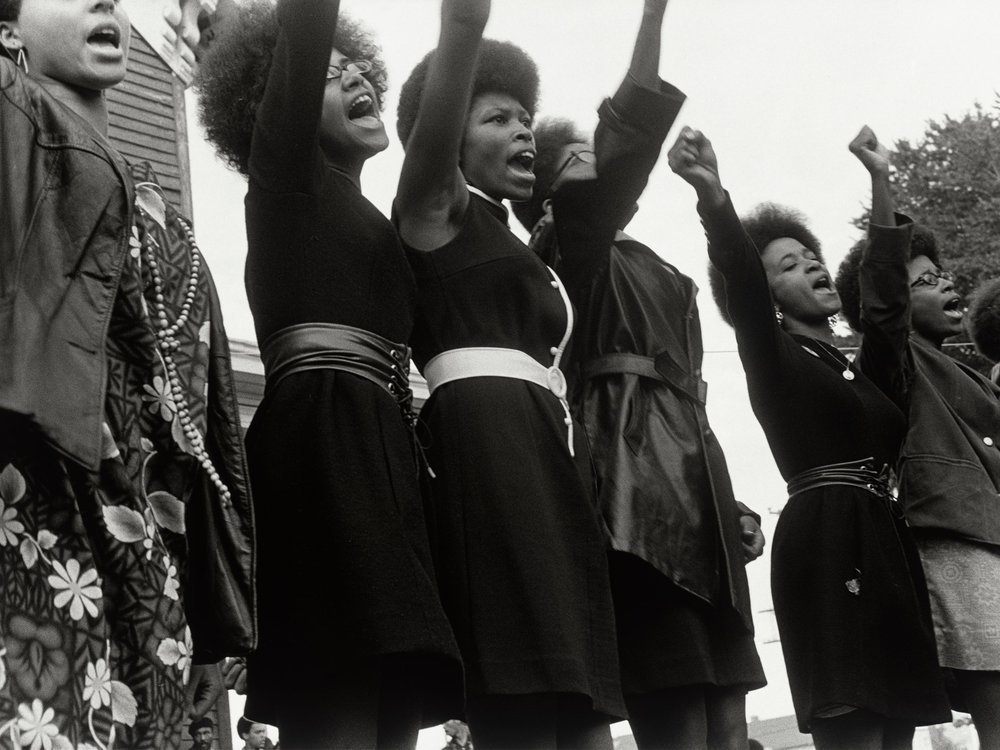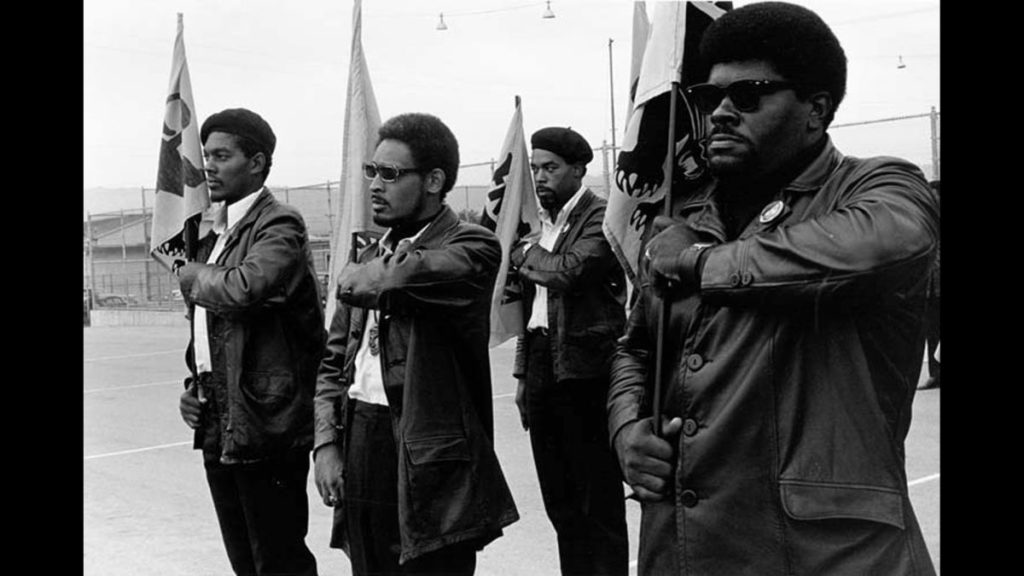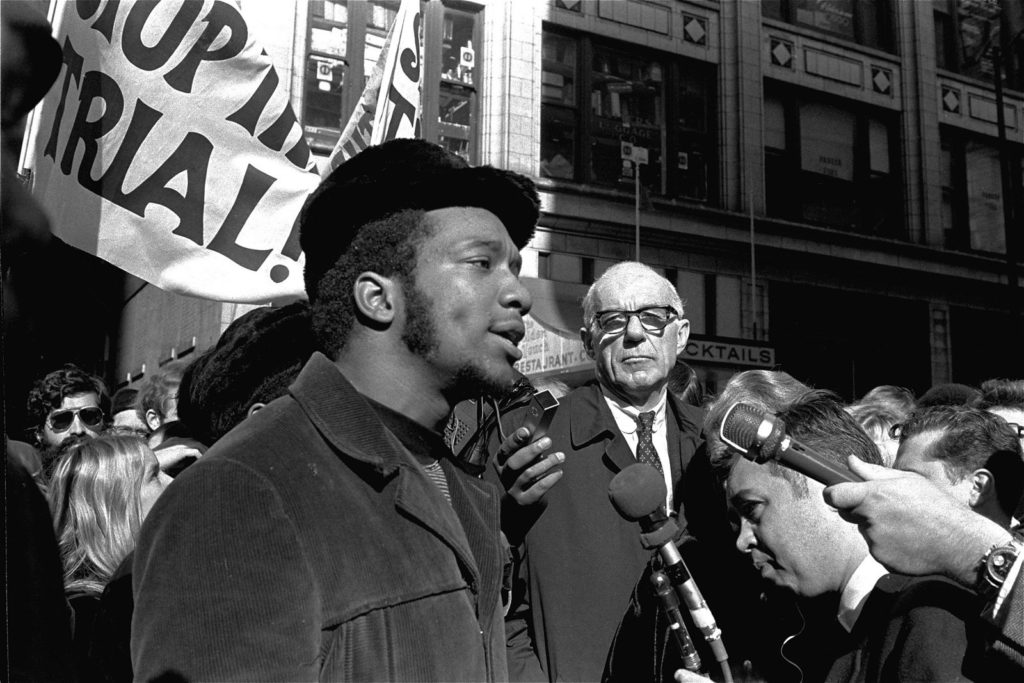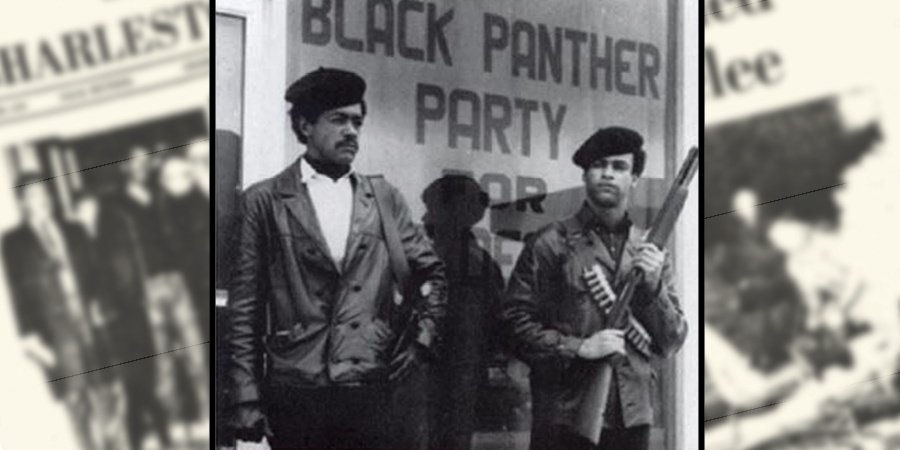The Black Panther Party
Black Panther Party founders Huey Newton and Bobby Seale met in 1961 while students at Merritt College in Oakland, California.
They both protested the college’s “Pioneer Day” celebration, which honored the pioneers who came to California in the 1800s, but omitted the role of African Americans in settling the American West. Seale and Newton formed the Negro History Fact Group, which called on the school to offer classes in Black history.
They founded the Black Panthers in the wake of the assassination of Black nationalist Malcolm X and after police in San Francisco shot and killed an unarmed Black teen named Matthew Johnson.
Originally dubbed the Black Panther Party for Self-Defense, the organization was founded in October 1966. The Black Panthers’ early activities primarily involved monitoring police activities in Black communities in Oakland and other cities.
As they instituted a number of social programs and engaged in political activities, their popularity grew. The Black Panthers drew widespread support from urban centers with large minority communities, including Los Angeles, Chicago, New York and Philadelphia. By 1968, the Black Panthers had roughly 2,000 members across the country.

Political Activities And Social Programs
Newton and Seale drew on Marxist ideology for the party platform. They outlined the organization’s philosophical views and political objectives in a Ten-Point Program. The Ten-Point Program called for an immediate end to police brutality, employment for African Americans, and land, housing and justice for all.
The Black Panthers were part of the larger Black Power movement, which emphasized Black pride, community control and unification for civil rights.
While the Black Panthers were often portrayed as a gang, their leadership saw the organization as a political party whose goal was getting more African Americans elected to political office. They were unsuccessful on this front. By the early 1970s, FBI counterintelligence efforts, criminal activities and an internal rift between group members weakened the party as a political force.
The Black Panthers did, however, start a number of popular community social programs, including free breakfast programs for school children and free health clinics in 13 African American communities across the United States.

The FBI And COINTELPRO
The Black Panthers’ socialist message and Black nationalist focus made them the target of a secret FBI counterintelligence program called COINTELPRO.
In 1969, the FBI declared the Black Panthers a communist organization and an enemy of the United States government. The first FBI’s first director, J. Edgar Hoover, in 1968 called the Black Panthers, “One of the greatest threats to the nation’s internal security.”
The FBI worked to weaken the Panthers by exploited existing rivalries between Black nationalist groups. They also worked to undermine and dismantle the Free Breakfast for Children Program and other community social programs instituted by the Black Panthers.
Fred Hampton
Before Breonna Taylor and Amir Locke were the victims of police “No Knock Warrants,” it was Fred Hampton. However, in his case the FBI planned the execution.
Hampton was an honors student from the Chicago suburbs who, as a youth leader with the NAACP, successfully campaigned to have a non-segregated swimming pool built in his hometown. When he joined the Illinois Black Panther Party in 1968, he quickly gained a reputation as a powerful speaker and a coalition builder across racial lines to fight police brutality and address poverty in Chicago’s most neglected neighborhoods. Hampton served as an outstanding leader of five different breakfast programs on the West Side, helped create a free medical center, and initiated a door to door program of health services which test for sickle cell anemia, and encourage blood drives for the Cook County Hospital.

Hampton used his talent as a communicator to create what he termed a “Rainbow Coalition,” an alliance of the Panthers with other groups organized around racial, ethnic, or ideological affiliation. Bringing together groups that otherwise would have had almost no positive contact—including the Puerto Rican Young Lords Association, the Poor White Young Patriots Organization, and the Blackstone Rangers street gang—the Rainbow Coalition provided aid to low-income citizens by combining the member groups’ varied resources.
Early in the predawn hours of December 4, 1969, a Peoples Gas truck pulled up in front of an apartment occupied by leaders of the Chicago chapter of the Black Panther Party. Fourteen plainclothes Chicago Police officers quietly filed out of the undercover truck, armed with pistols, a shotgun, a machine gun, and a detailed map (provided by the FBI, courtesy of the informant William O’Neal, who positioned himself as Hampton’s security chief). The map clearly identified the bedroom of Fred Hampton, the 21-year-old “chairman” of the Chicago Black Panthers, who was asleep (from being drugged by O’Neal) beside his eight-month-pregnant fiancée. At 4:30 a.m., the police kicked down the front door and started shooting. Ballistics reports later showed that they fired more than 90 times, including machine gun rounds through exterior walls and windows.
When the volley of bullets finally stopped, four of the young Black Panthers inside the apartment lay shot and critically wounded, and two had been killed. The first was Mark Clark, who reached for his own shotgun before taking a bullet through the heart. The second was Fred Hampton, gunned down in his bed. To the FBI, Hampton was another potential “messiah” rising up through the ranks of the Black Panther Party and being groomed for national leadership.
In 1971, a group of antiwar activists broke into an FBI office in the suburbs of Philadelphia looking for evidence that the FBI was spying on leaders of the antiwar movement. What they accidentally uncovered was documented proof of the existence of a secret FBI scheme called COINTELPRO (Counterintelligence Program) with orders to “disrupt, misdirect and otherwise neutralize” Black power movements.
It was under the auspices of COINTELPRO that the FBI spied on and harassed civil rights leaders like Martin Luther King, Jr. and Malcom X. It was all part of Hoover’s efforts to prevent, in his words, the “rise of a messiah that would unify and electrify the militant nationalist movement.”
By the beginning of the 1980s, attacks on the party and internal degradation and divisions caused the party to fall apart. The leadership of the party had been absolutely dismantled, with its rank and file constantly terrorized by the police, killed, imprisoned by false accusations (i.e. Mumia Abu-Jamal, Sundiata Acoli, Mutulu Shakur), or forced to flee the United States (Assata Shakur, and others). Other notable members were Afeni Shakur, mother of Tupac Shakur; Dr. Angela Davis; Kathleen Cleaver; Kwame Toure (Stokely Carmichael); and Elmer “Geronimo Ji Jaga” Pratt.
Sources:
- Black Panthers
- The 1969 Raid That Killed Black Panther Leader Fred Hampton: Details around the 1969 police shooting of Hampton and other Black Panther members took decades to come to light.
More information:
- How the Black Panthers’ Breakfast Program Both Inspired and Threatened the Government: The Panthers’ popular breakfast programs put pressure on political leaders to feed children before school.
- Elmer Pratt: Other California Cases with Mistaken Witness Identifications
- Huey P. Newton
- Bobby Seale
- How the Black Power Movement Influenced the Civil Rights Movement
- The Rank and File Women of the Black Panther Party and Their Powerful Influence
- 50 years later, who are the heirs of the Black Panthers?
See more Black History content at schoolcraft.edu/BHM

